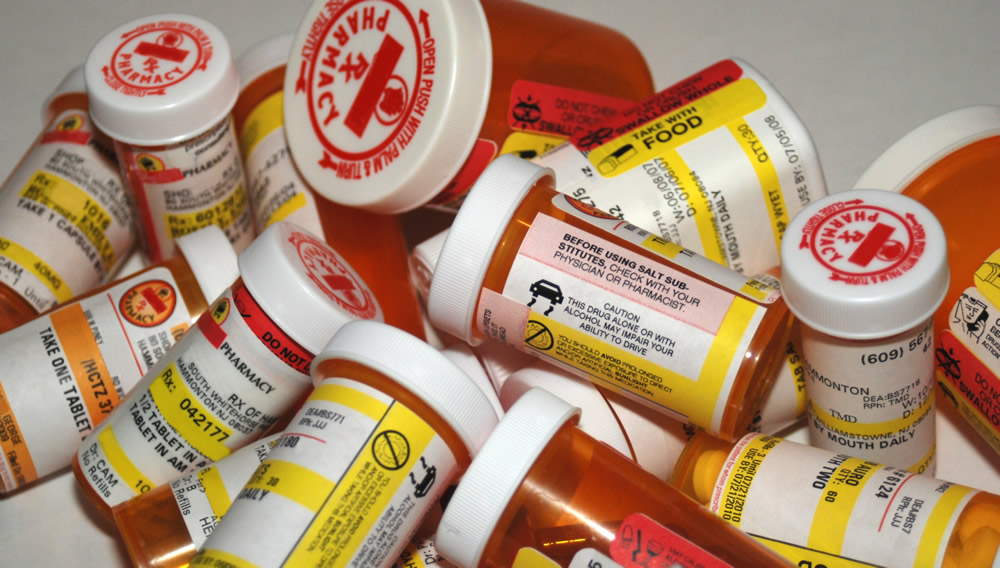All About Prescription Bottles
- Published by
- Posted on
- Leave your thoughts
-
We all have medicines prescribed by doctors. You might have some in your cabinet or handbag right now. Ever wondered why they are always colored orange? Why they are always small? Why always cylindrical? Here is all you need to know about prescription bottles.
What are prescription bottles?
Prescription bottles are containers, commonly cylindrical, for keeping medicines prescribed by doctors, physicians or pharmacists. Prescription bottles are also called Medicinal/Chemical/Druggist Bottles.

Did you know that you can reuse your empty prescription bottles in so many different ways? Just peel off the label and store in it all that you can
History
History of prescription bottles goes back to 19th and 20th century. Thousands of varieties of these containers are manufactured since then. This number of varieties is not very surprising since human health is the most important issue of all times. This issue gained more importance during the era when medical knowledge was primitive and personal hygiene and causes of diseases were ignored. Prescription bottles at that time were usually made of glass and used to be 20 to 25 centimeters long.
One of the oldest prescription bottles is shown below. The bottle was manufactured in the mid-19th century and was used for nearly every medicinal product from that period. It has a general rectangular shape with indented panels.
Various books have been written on the history of prescription bottles. Books like “History of Drug Containers and Their Labels” by George Griffenhagen and Mary Bogard, “The Toadstool Millionaires - A Social History of Patent Medicines in America before Federal Regulations” by James Harvey Young (1961) and “The Medical Messiahs - A Social History of Health Quackery in Twentieth-Century America” by James Harvey Young (1967) give an in depth overview on history of these vessels.
Prescription Bottle Shapes
Square: Square shaped prescription bottles were relatively common among the local druggists and drug stores but not as common as rectangular shaped medicinal bottles. The most common type of square prescription bottle was “French Square” with square cross section and beveled corners.
Rectangular: Rectangular mouth-blown prescription bottles were commonly used by druggists and drug stores between the late 1870s and 1920s. It had a perfectly rectangular cross-section, usually 4 to 5 centimeters wide. Most popular version of rectangular medicinal bottle is “Blake” style and its variations. The Blake style has rectangular, variably wide cross-section and flat beveled corners and four flattened sides.
Oval: Oval shaped bottles are again popular among the drug stores. The cross-sectional shape of these bottles can vary but they are usually round from more than one sides or corners. Some of them are flattened from all sides and round from the corners. The size of the cross-section varies from bottle to bottle. The most common style of oval shaped prescription bottle is “Philadelphia Oval”. It has a flattened front panel with rounded sides and back.
Cylindrical/round: Cylindrical prescription bottles are round in cross-section. It was widely used by drug stores but not as much as the other flat paneled shapes. According to the 1880 Whitall Tatum & Company catalog, these bottles were used “…by some of the first pharmacists…”.
Modern Prescription Bottles
Earlier in 19th and 20th century, before plastic was widespread, prescription bottles, used to store medicines, ointments, tablets and poison were made of ceramic or glass.
Most of the modern prescription bottles are made up of clear red plastic. They are usually cylindrical and relatively small in size for easy storage. The bottles are labeled with the name of medicine and patient it is prescribed to, followed by production and expiration date on them.
Some of the major companies that distribute prescription bottles are Walmart, CVS Caremark, Costco, Walgreens and Target Corporation.
Colored Bottles
Prescription bottles are usually colored to provide maximum protection to the medicines. Common colors used are red, green, dark green, cobalt blue and aqua. But the most popular color for prescription bottles happens to be amber to orange, because of its low production price and maximum protection for medicines. Recently red color is adopted by the Target stores to color the prescription bottles manufactured by them.
Why are prescription bottles colored?
Some substances like milk and medicines are negatively affected by light. Prescription bottles are usually colored to prevent light from degrading the medicines. Otherwise, direct light can damage the medicines by photochemical reaction.
Why prescription bottles are colored Orange?
Orange is an extension of amber color. So, it is as effective and has low production cost. Orange color helps to prevent light from penetrating through the prescription bottles and degrading the medicine. Orange color has been adopted by all major prescription bottle manufacturers. That is why if you see a small orange bottle, you make a fast assumption that it’s a medicinal bottle. Moreover, orange’s vibrancy makes it easy to find a prescription bottle in a stack of bottles in your cabinet, drawers or bags.
Here is a fun fact about prescription bottles. Did you know that you can reuse your empty prescription bottles in so many different ways? Just peel off the label and store in it all that you can. You can store bandages, beads, bobby pins, breath mints, buttons, cash, coins, glitter, rubber bands, safety pins, seeds, toothpicks and much more.





